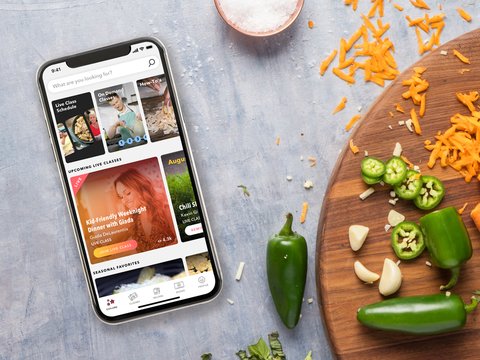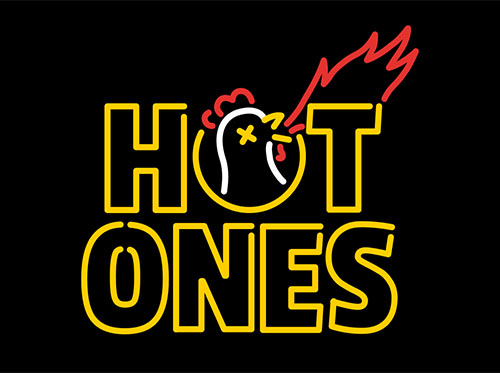What COVID-19 Means for the Future of the Dining Ecosystem
Key Highlights
- What’s Happening: The Growth of Online Grocery Shopping, Food Delivery, and Meal Prep Services During The COVID-19 Crisis:
- As restaurants are forced to shut down, and grocery stores become overcrowded and understocked, digital platforms for restaurant, grocery, and meal prep delivery are experiencing a surge in demand.
-
What’s Next: Food Media Brands Will Emerge as Critical Partners, Accelerating Their D2C Evolution
-
In a commoditized supply-side marketplace of food/grocery/meal prep delivery platforms competing for user-acquisition amidst a sharp spike in demand, Food Media brands may become valuable assets.
-
As local restaurants suffer the most dramatic consequences, Food Media brands can become valuable partners to help them weather the storm and pivot to more sustainable models.
-
-
The New Normal: How Food Media Brands Ascend up the Value Chain of a Post-COVID Ecosystem
-
Norms around social distancing will fundamentally alter the economic dynamics of the restaurant business, resulting in a heightened emphasis on takeout/delivery revenues. The current reshuffling of the ecosystem in response to this crisis will set the foundation for the “new normal”. This transformation presents Food Media brands with a unique opportunity to enhance and cement their value in a post-COVID world.
-
What’s Happening: The Growth of Online Grocery Shopping, Food Delivery, and Meal Prep Services During The COVID-19 Crisis
-
Through March 15 YTD, online grocery spending in the US grew 60% YoY (faster than the 20% growth in e-commerce spending). From March 12 through March 15, online grocery orders grew more than 150% and spending grew 210%, reflecting larger average orders.
-
Instacart’s customers’ average basket size is up 20% MoM. Daily app downloads on the iOS App Store grew 4x over the previous week. Instacart is the #39 most popular free iPhone app in the US – up from its usual rank around no. 400.
-
There is not as much public data available on the effect that COVID-19 is having on the online food delivery business (e.g. Grubhub, Postmates, etc.), but Uber’s CEO recently predicted an increase in its food delivery business due to the crisis: “our business Eats will probably actually benefit”.
-
Blue Apron CEO: The company is experiencing “a sharp increase in consumer demand” during the COVID-19 crisis.
What’s Next: Food Media Brands Will Emerge as Critical Partners, Accelerating Their D2C Evolution
The COVID-19 crisis is leaving no industry untouched, with restaurant and hospitality businesses among the most severely impacted. Clients and peers have asked us how this unique moment will impact the Food Media space, an exciting industry subsector that we’ve discussed in a past blog post.
We believe that the crisis presents Food Media brands with an exciting opportunity to play a positive role in the dining ecosystem (consumers, independent restaurants, and online delivery/grocery/meal prep services).
The product offering of food delivery platforms is extremely commoditized. Grubhub CEO, Matt Maloney, said on a recent conference call,
“We all have the same algorithms, the same driver interactions, the same ETAs. The five-minute difference in delivery time is negligible for diners. Effectively, delivery, as a function, is commoditized.”
As demand for food delivery dramatically increases, it will be crucial for delivery platforms to differentiate themselves in order to acquire users, build habitual relationships with them, and capture share of a growing market. Therefore, user acquisition costs are rising as platforms seek to capitalize on this moment. Maloney explains,
“What we are doing is we are leaning into our profits and stealing share at a time when everyone else in the industry is fighting to find break-even.”
Food Media brands that have built trust and brand equity with consumers, can generate value by leveraging their content to help platforms differentiate themselves through enhanced curation and discoverability. Food Media brands can also leverage their audience reach/engagement as a top-of-funnel UA tool for platform partners.
We at RockWater have seen these types of partnerships before:
-
The Infatuation has already partnered with Postmates to enhance discoverability and curation on the platform by integrating Infatuation’s popular ratings and reviews.
-
Rachel Ray partnered with Uber Eats to launch “ghost kitchens” (or “virtual restaurants”) across 17 North American cities called “Rachel Ray To Go”. This “restaurant” allows Rachel Ray fans and Uber Eats users to experience popular creations featured in Ray’s most recent cookbook.
-
Similarly, Bon Appetite and GrubHub partnered to launch a virtual restaurant in Chicago serving popular dishes featured on BA’s popular “Test Kitchen” video series, and Tastemade has launched ghost kitchens with delivery platform partners in Japan and Brazil.
Although the economic impacts of the COVID crisis may also limit consumer restaurant-delivery budgets, we’ve also seen similar collaborations for both groceries and pre-prepped meal kits:
-
One of the most innovative partnerships is between Food Network and Amazon. Food Network’s standalone SVOD app, “Food Network Kitchen”, features interactive live and on-demand cooking classes with popular Food Network personalities. Viewers can “view and do” by cooking along at home. Amazon powers the shoppable integrations by enabling viewers to order the ingredients for 80,000+ featured recipes directly through the app.
-
Similarly, Chrissy Teigen partnered with Blue Apron to allow subscribers to order the meals featured in Teigen’s famous cookbook, “Cravings”.
Independent restaurants and their employees are among the hardest hit by the current crisis. Local restaurants can’t survive on delivery via 3rd-party platforms alone, as these services take an approximately 30% rev-share of all orders. An independent restaurant owner in LA commented,
“In a nutshell, that means the restaurant essentially makes no profit on deliveries”.
Although some platforms like DoorDash and GrubHub have agreed to temporarily lift fees, restaurants are fighting an uphill battle. During this crisis, Food Media brands have the potential to provide unique value through direct partnerships.
-
Barstool Sports partnered with Slice, a pizza-delivery app built to help smaller independent pizza shops. Through Barstool’s “One Bite” app, powered by Slice, “Stoolies” can order delivery from any restaurant featured on Barstool’s hit “One Bite Pizza Review” franchise, as well as other local restaurants reviewed by Stoolies. The founder/CEO of Slice explains the unique value that a content partner can bring to the table: “When we heard they were creating a content hub specifically about pizza, we knew we had to be a part of it and leverage the opportunity on behalf of our pizzeria partners. While One Bite brings the content to the table, we bring the technology, easy ordering, and ability to both enjoy and support local pizzerias all at once.”
-
Complex partnered with independent NYC hot sauce store Heatonist on a curated storefront on its website, and a monthly hot sauce subscription box inspired by Complex’s hit franchise “Hot Ones”. With retail outlets closed and consumers staying home cooking and streaming, this partnership could generate much needed incremental traffic and revenue to get Heatonist through a difficult period.
-
Similarly, Eater is taking its popular “Test Kitchen” event series virtual. The event series, which covers everything from book clubs, wine tastings, dinners and chats with famous chefs, and more, will now broadcast on Zoom and Instagram Live. One of the featured events is a wine club hosted by Kae Whalen, the Beverage Director at LA hotspot Kismet. Wouldn’t it be neat if in advance of this event, Eater could help Kismet sell the wines that will be featured, along with a curated, well-paired food offering?
The New Normal: How Food Media Brands Ascend up the Value Chain of a Post-COVID Ecosystem
Although the COVID-19 crisis is temporary (though it could easily become a 12+ month scenario), there are long term stakes for the entire food industry. Bar and hospitality consultant, Jon Taffer, weighs in:
“What happens after [the current crisis] is fascinating…the premise of social distancing, while it’s relevant now during a pandemic, is not going to go away soon. People are not going to sit next to each other, shoulder to shoulder – two strangers at a bar – for quite a long time…We now have to spread tables to effect reasonable social distancing. If the government doesn’t require it, my position is that the consumer is going to expect it…So when the restaurants reopen and the bars reopen, you’re probably going to have half as many bar stools…you’re going to have 30-40% less tables…which means your revenue potential after the pandemic at the most is going to be about 70% of what it was before the pandemic.”
As the economic dynamics of the restaurant business are fundamentally altered, the current emphasis on out-of-restaurant revenue isn’t merely a stopgap solution, its a preview of the future.
Restaurateur Martha Hoover explains,
“We also know that delivery will be the new norm…Anything we can do to increase the bottom line by increasing our non-brick-and-mortar opportunities is where our business model is going.”
This unique moment demands quick pivots and innovations to solve near-term problems, and we at RockWater believe that many operators will emerge having discovered “evergreen” innovations with applications that outlast the current crisis. Operators that don’t will have missed an incredibly opportune moment to advance their businesses and build a competitive advantage for a new normal.
As new consumer habits and brand loyalties are being formed en masse, there is a tremendous opportunity for platforms to win market share and for restaurants to build loyal followings in their communities. This heightened sense of opportunity strengthens the enterprise value that Food Media brands possess through their engaging content and expansive audience reach. As platforms battle for share of an exploding market, there is a heightened focus on user acquisition cost, and the potential of Food Media brands as UA tools becomes even more valuable.
However, this isn’t the time for “business as usual”.
The examples above are simply a jumping-off point for what’s to come. For Food Media brands to increase long-term value, they must use this unique moment as an opportunity to increase their leverage in the value chain, by showcasing the outsized role they’re capable of playing in a post-COVID ecosystem. Initiatives like “virtual restaurants”, shoppable “View & Do” OTT platforms, and dedicated hubs like the pizza app, are indicative of the ambitious and integral role that Food Media brands can now play for consumers and platforms.
Does this mean NY Times’ popular recipes app will partner with InstaCart to close the gap between viewing and doing? Will commerce-enabled OTT brands, like Spirits Network, capitalize on the converging booms of streaming and home-delivery to grow sales for their partner beverage brands? Will the rumored Barstool pizza restaurant in NYC pivot into a nationwide chain of virtual restaurants powered by Slice? Will a prominent food influencer/curator like The Infatuation partner with or acquire a “smart kitchen” delivery hub (like LA’s Colony or SmartKitchens) to launch virtual versions of Time Out’s popular food halls?
Perhaps yes, and perhaps the ambitions and innovations are bigger than we can anticipate.
Overall, we strongly believe that well-capitalized Food Media brands will use this transformative moment to accelerate their D2C evolution and solidify their roles as an indispensable factor in the dining ecosystem.
—
Ping us here at anytime. We love to hear from our readers.



